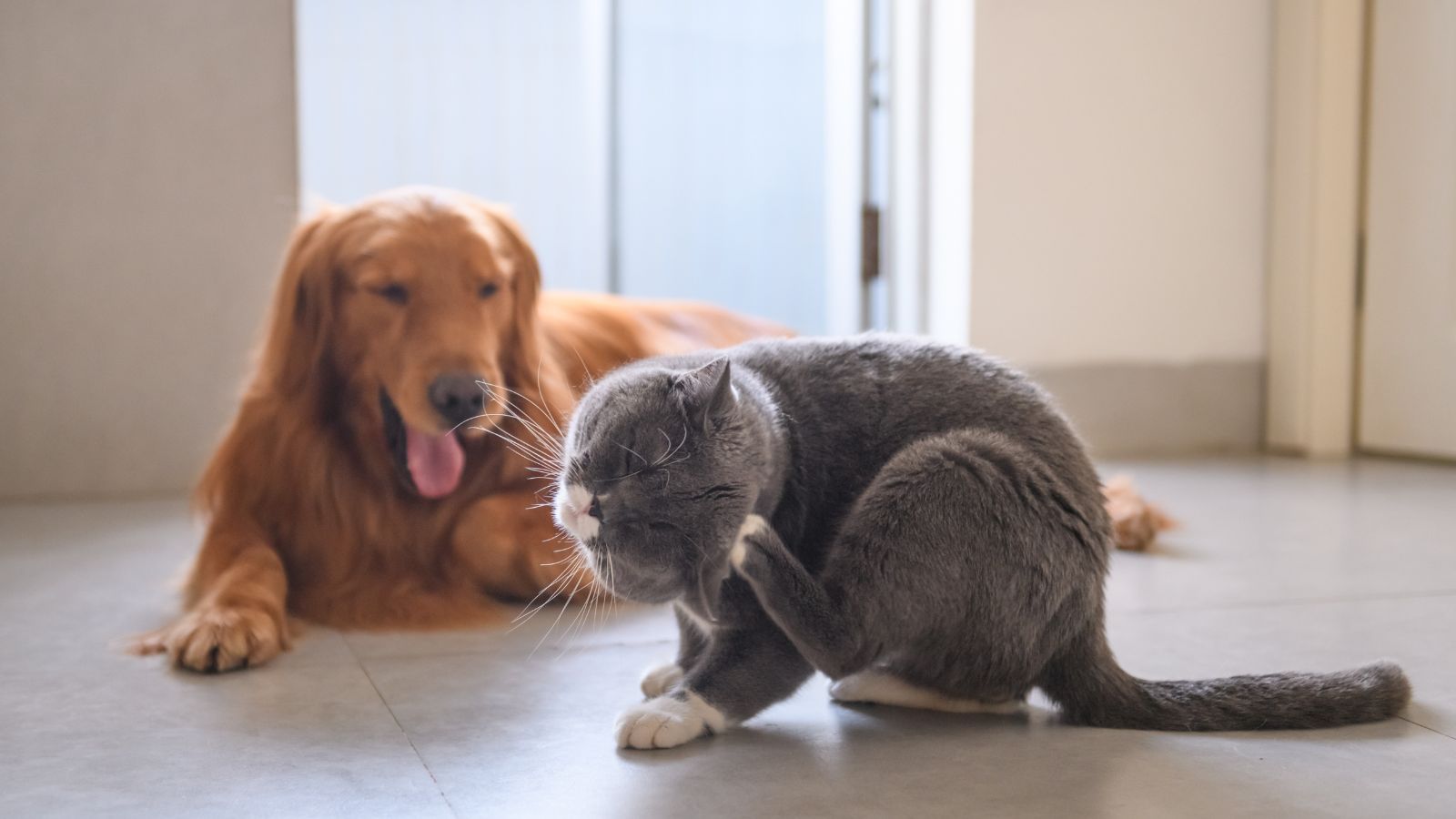Our pets are family no matter their age— and while we love our aging dogs and cats just as much as when they were puppies and kittens, it can be hard to admit that they’ve actually reached their senior years. But how do you know what age constitutes “senior”? And, if they are a senior pet, do you need to treat them any differently? To help, we’ve created a guide for determining when your dog or cat is truly considered a senior and what signs to look for so you can adapt his or her care to fit his or her health needs.
Battle of the Ages: Cats vs. Dogs
Contrary to popular belief, one human year is not equal to seven dog or cat years. The truth is that it’s difficult to throw a hard number out there. What’s more practical, however, is giving an age range that many veterinarians feel covers what could be considered senior years.
According to the American Veterinary Medical Association, cats and small dogs are generally considered senior at the age of 7. Larger breed dogs tend to have shorter life spans and are considered seniors when they are 5 to 6 years of age.
Keep in mind that senior age varies based on different factors such as breed, nutrition, and even environment. Your pet’s weight and the state of their organs can also affect the aging process.
The American Animal Hospital Association (AAHA) provides a great chart that details the physiological age of both canines and felines in human years, as well as age-appropriate preventative testing recommendations.
Senior Signs to Look For
There are quite a few things that point to an aging pet— many of which are similar to the signs of aging in people. Some of these factors may be more obvious, like graying hairs or limited mobility, while others are much more subtle. Behavior patterns can also indicate signs of aging.
Some signs your pet might be entering the senior years can include:
- Slowing down
- Gaining weight easily
- Hearing or vision problems
- Increased sleep
- More bathroom breaks and/or frequent accidents
- Less interaction with you
- Confused or forgetful
- Anxious
- Bad breath or decreased dental health
- Lumps or bumps on the body
If you notice any of these symptoms, it’s time for a vet visit. The earlier the symptoms are addressed, the sooner your pet can be treated.
Helping Your Senior Pet Age Gracefully
While there’s no way to prevent the aging process, we can at least improve the quality of the time our pets have. So, just what can you do to provide the best care for your senior pet?
If you have a senior dog:
- Schedule regular visits with your vet and ask for a body condition evaluation.
- Feed them a high-quality diet that will help maintain a healthy weight or aid in managing health ailments. Your vet can help you pick the best foods that will meet specific needs.
- Keep them occupied with exercise and toys.
- Don’t ignore proper dental care.
- Make living arrangements more comfortable.
If you have a senior cat:
- Pay attention to their diet. Senior cats have unique dietary and behavioral needs, so talk with your vet to ensure you are feeding the right foods.
- Make sure plenty of water is available.
- Keep an eye out for subtle signs of pain. Since cats can be good at hiding their pain, it doesn’t hurt to go to the vet for regular checkups.
- Provide them with exercise and mental stimulation.
- Pay attention to their teeth as dental disease is very common in aging cats.
If you have any questions about feeding your senior pet or giving them additional supplements to help with old-age aches and pains, see our staff in-store. They can help you understand all of the options and provide additional tips and tricks for you and your senior pet!
The good news is that many pets are now living longer, higher-quality lives. With a healthy environment and good, regular care, there’s an excellent chance your senior pet still has many more years left to enjoy with you.


.png)



